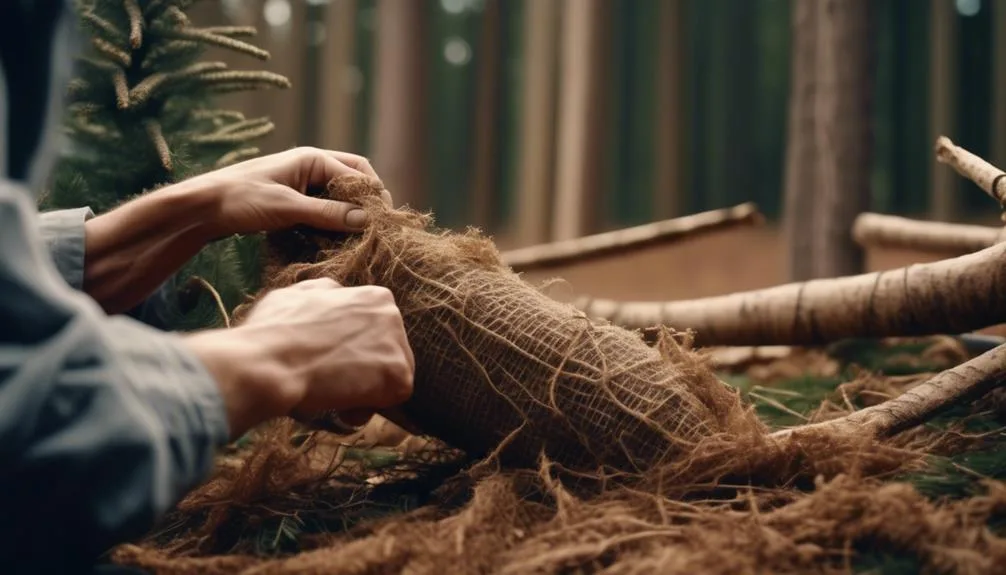Preparing your spruce trees for winter may seem overwhelming, but with a few simple techniques, you can ensure they thrive in the cold.
From strategic pruning to protective mulching, specific steps can safeguard your trees from harsh winter conditions.
These practices will help your spruce trees endure the frosty months and set them up for a healthy spring.
Winter Pruning Techniques
Now is the time to prepare your spruce trees for winter by implementing effective winter pruning techniques. Pruning timing is crucial for the health of your trees.
The best time to prune your spruce trees is late winter or early spring, before new growth begins. This timing helps to minimize stress on the trees and allows for optimal healing of the pruning wounds.
When pruning, pay close attention to the branch structure. Remove any dead, diseased, or damaged branches to promote healthy growth and overall tree vitality. Additionally, thin out any crowded areas to improve air circulation and sunlight penetration.
Mulching for Insulation
To insulate your spruce trees for the winter, consider applying a layer of mulch around the base of each tree. Mulching offers several benefits for the health and protection of your trees during the colder months. Here's why mulching is essential:
- Soil Health: Mulch helps maintain soil moisture, which is crucial for the roots of spruce trees. It also prevents soil erosion and compaction, promoting overall soil health.
- Temperature Regulation: Mulch acts as insulation, protecting the roots from extreme temperature fluctuations. This is especially important during winter when the soil can freeze and thaw repeatedly.
- Weed Suppression: A layer of mulch helps suppress weed growth around the base of the trees, ensuring that the spruce trees have access to essential nutrients and reducing competition for resources.
Protecting Against Snow Load
When preparing your spruce trees for winter, it's important to protect them against potential snow load to ensure their safety and health.
Snow accumulation can place a heavy burden on the branches of your spruce trees, leading to bending or breakage.
To prevent this, consider using tree supports, such as wooden props or specialized tree straps, to provide additional structural support to the branches. Properly installed supports can help distribute the weight of the snow and reduce the risk of damage.
Additionally, proactive snow removal can also safeguard your trees. Gently shaking the branches after a snowfall or using a broom to carefully brush off excess snow can prevent excessive strain.
Maintaining Proper Moisture Levels
As you ensure your spruce trees are supported against snow load, it's crucial to also monitor and maintain proper moisture levels to safeguard their health during the winter months. Proper moisture levels are essential for the trees to withstand the harsh winter conditions. Here are some key points to consider:
- Watering Frequency: During winter, the frequency of watering may decrease, but it's still important to water your spruce trees regularly, especially if there's a dry spell or lack of snow cover.
- Soil Moisture: Check the soil moisture regularly to ensure it remains consistently moist but not waterlogged. Proper soil moisture is vital for the roots to stay healthy and absorb nutrients.
- Mulching: Applying a layer of mulch around the base of the trees can help retain moisture and regulate soil temperature.
Preventing Winter Damage
Ensure your spruce trees are adequately protected from winter damage by taking proactive measures to support their resilience in the harsh seasonal conditions.
Frost protection is crucial, so consider wrapping the trunks with burlap or applying an anti-desiccant spray to shield them from freezing temperatures.
Additionally, prune any damaged or weak branches to reduce the risk of breakage under heavy snow or ice.
Implement windbreak strategies by erecting barriers on the prevailing windward side of the trees to minimize drying and desiccation. This can be achieved using burlap screens or wooden fencing.
Keep in mind that evergreen trees continue to lose water through their needles in winter, and wind exacerbates this process.
Conclusion
Incorporating these simple measures will help your spruce trees thrive during the winter months.
By employing proper pruning, mulching, and moisture maintenance, they can withstand the challenging conditions and emerge strong in the spring.
With these strategies in place, your trees are well-prepared to weather the winter, ensuring their health and vitality.

My interest in trees started when I first saw the giant sequoias in Yosemite.
I was a teenager then, and I remember thinking, “I need to learn more about this.”
That moment stuck with me.
A few years later, I went on to study forestry at Michigan Tech.
Since graduating, I’ve worked in a mix of hands-on tree care and community education.
I’ve spent over ten years helping people understand how to plant, maintain, and protect the trees in their neighborhoods.
I don’t see trees as just part of the landscape.
They are living things that make a real difference in our daily lives.
